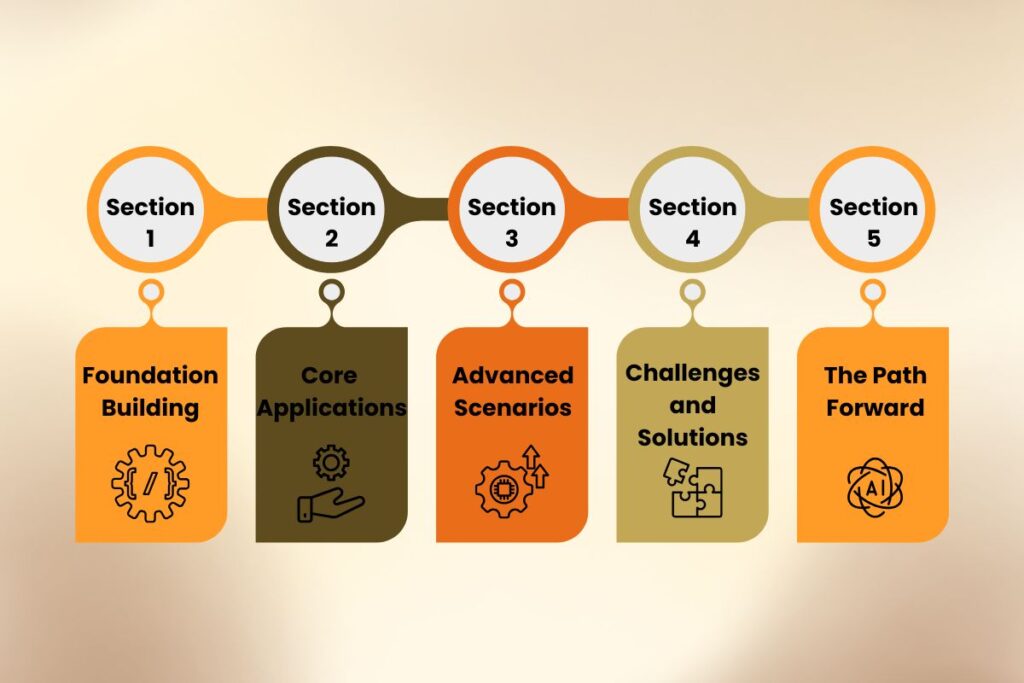Once confined to overseeing IT infrastructure, today’s CIO is expected to be a strategist, a communicator, and a driver of digital transformation. They are the ones who must ensure security, manage data at scale, support innovation, and still keep the systems running without fail. Yet the scope of responsibility has grown so broad that even the most experienced executives find themselves stretched.
The rise of AI avatars in a CIO’s life is beginning to offer a solution. Far from being novelty tools, these avatars are built to shoulder responsibilities, which include representing leadership in communications, streamlining operations, and acting as an always-available strategic aide. Their purpose is not to replace the CIO, but to extend their reach. A digital counterpart that can handle routine engagements, analyze patterns, and enable the human CIO to stay focused on vision and innovation.
This shift is about moving beyond the era of assistants and into a phase where AI avatars become trusted partners in executive collaboration. To understand the path ahead, it’s worth exploring this transformation’s foundations, applications, advanced scenarios, and challenges.
Top 5 Section of AI Avatars in a CIO’s Life:

Section 1: Foundation Building
1. The Strategic Assessment: Evaluating Avatar Readiness
Before a CIO even considers deploying avatars, there must be an honest look at readiness. Does the organization have the infrastructure to support conversational AI? Are employees open to engaging with digital personas? AI avatars in a CIO’s life work best when the environment welcomes them, not when they’re forced into workflows. A readiness assessment allows leaders to map current strengths, like strong cloud adoption or a culture of digital experimentation, while identifying gaps in trust or training.
2. Technology Architecture: Building the Avatar Ecosystem
An avatar is only as good as the architecture supporting it. CIOs must weave together natural language models, secure data pipelines, and integrations across enterprise tools. The goal is to create an ecosystem where avatars can access information seamlessly without exposing sensitive data. Think of it as designing the digital nervous system of the enterprise. This architecture ensures AI avatars in a CIO’s life are not siloed curiosities but embedded partners in daily operations.
3. Governance Framework: Establishing Ethical Guidelines
No discussion is complete without governance. When avatars take on leadership-adjacent roles, questions of transparency, privacy, and bias naturally follow. Establishing a framework that clearly defines when an avatar can speak for the CIO, how conversations are logged, and where data is stored helps avoid ethical pitfalls. Employees and stakeholders must trust that AI avatars are helpers, not manipulators or threats. This trust is earned through transparency, not assumed.
Section 2: Core Applications

1. Executive Communications: Scaling Leadership Presence
CIOs are often stretched thin, managing global teams and multiple initiatives. Avatars can scale their presence, delivering consistent updates, briefing teams, and representing them in lower-stakes meetings. This doesn’t mean employees get a cold, automated message. Instead, AI avatars in a CIO’s life capture their leader’s tone and intent, ensuring communication feels authentic even when the CIO is elsewhere. It’s leadership amplified, not diluted.
2. Strategic Planning: AI-Enhanced Decision Making
Decision-making in IT is rarely straightforward. Budgets, risks, and competing demands all collide. Avatars act as analytical partners, sifting through data, running scenarios, and presenting clear options. For a CIO, this is like having a second mind that never tires, one that can evaluate ten possible strategies overnight and deliver insights in the morning. AI avatars transform strategy sessions from gut-driven debates into informed conversations grounded in data.
3. Operational Excellence: Streamlining IT Operations
Routine tasks, monitoring system health, or reviewing compliance reports can easily consume a leader’s focus. Avatars quietly handle these information streams, surfacing anomalies and trends before they escalate. With AI avatars, a CIO does not need to scan endless dashboards. Instead, the avatar highlights, “Here are the three issues that matter today.” It’s about clearing clutter so humans can focus on meaningful action.
4. Stakeholder Management: Enhanced Engagement Strategies
CIOs must constantly balance relationships with peers, vendors, regulators, and employees. Avatars can help maintain that balance by managing communications, drafting context-sensitive messages, and rehearsing conversations. Think of it as a preparatory partner: AI avatars help CIOs step into every interaction with clarity and context, ensuring no stakeholder feels overlooked.
Section 3: Advanced Scenarios

1. Global Leadership: Managing Distributed Teams
As enterprises operate across continents, presence becomes fragmented. Avatars act as local surrogates, bridging time zones and cultural contexts. A CIO in New York can have an avatar engaging with a project team in Singapore overnight, ensuring decisions don’t stall. This means AI avatars in a CIO’s life expand leadership across borders without burning out the leader themselves.
2. Crisis Response: Rapid Decision-Making Capabilities
Crisis moments test every leader. Cyberattacks, system outages, or regulatory challenges demand instant responses. Avatars, pre-trained on crisis protocols, can act as first responders, flagging the issue, initiating containment measures, and escalating with context. While the CIO steps in for final judgment, AI avatars cut through delay and create a buffer of immediate action.
3. Innovation Management: AI-Driven Ideation and Evaluation
Avatars are not only reactive. They can be proactive sources of innovation, analyzing trends, synthesizing research, and suggesting experimental projects. When CIOs host brainstorming sessions, avatars can contribute insights from global patterns, not just local experience. This turns AI avatars in a CIO’s life into partners for ideation, capable of sparking creativity instead of merely executing commands.
4. Digital Transformation: Leading Change Initiatives
Every CIO champions digital transformation, but change fatigue is real. Avatars help carry this load by coaching teams, guiding adoption of new platforms, and checking in on employee sentiment. Because they interact continuously, AI avatars in a CIO’s life smooth the path of transformation, ensuring initiatives stick rather than stall.
Section 4: Challenges and Solutions
1. Technical Challenges: Integration and Scalability Issues
The promise of avatars often collides with messy integration. Legacy systems may not connect smoothly, and scaling avatars across departments demands robust infrastructure. CIOs must plan carefully, ensuring that AI avatars don’t become isolated pilots but scalable assets.
2. Human Factors: Adoption and Change Resistance
Employees can resist engaging with avatars, fearing job loss or depersonalization. Here, transparency matters. CIOs must frame avatars as augmenters, not replacers. Trust grows when people see AI avatars handling repetitive burdens, not human creativity.
3. Governance Issues: Ethics and Compliance
From deepfake risks to regulatory uncertainty, avatars carry governance concerns. Establishing compliance checks, access controls, and disclosure norms keeps deployments safe. A CIO’s credibility hinges on ensuring AI avatars in a CIO’s life remain ethical, not opaque.
4. Future Risks: Preparing for Emerging Challenges
The more realistic avatars become, the more blurred the line between human and digital. This poses risks of identity misuse, manipulation, or loss of authenticity. CIOs must prepare today for these tomorrow-shaped problems, ensuring AI avatars remain empowerment tools, not deception.
Section 5: The Path Forward

1. Implementation Roadmap: Step-by-Step Deployment
Adopting avatars is not a single leap but a gradual path. Start with contained pilots, like using avatars for summaries, then scale to strategic applications. As AI avatars prove reliable, expand their roles into executive communication and crisis response.
2. Success Metrics: Measuring Avatar Impact
It’s not enough to deploy; impact must be measured. Metrics include reduced meeting hours, faster decision cycles, or improved employee engagement. When tracked honestly, these results show how AI avatars move from novelty to necessity in a CIO’s life.
3. Future Vision: The Avatar-Enabled Enterprise
Enterprises may operate in hybrid leadership models, where human leaders and avatars function as co-executives. This doesn’t diminish human leadership; it enhances it. AI avatars in a CIO’s life could become second selves: always available, context-rich, and deeply aligned with organizational goals. The future CIO will not just manage technology; they will live in partnership with it.
Conclusion
The rise of AI avatars signals a redefinition of leadership itself. They are no longer gimmicks but thoughtful extensions of executive presence, helping CIOs understand complexity with clarity and speed. For those ready to embrace the shift, AI avatars in a CIO’s life offer both efficiency and strength, a trusted partner for the unpredictable world of modern enterprise leadership.

















